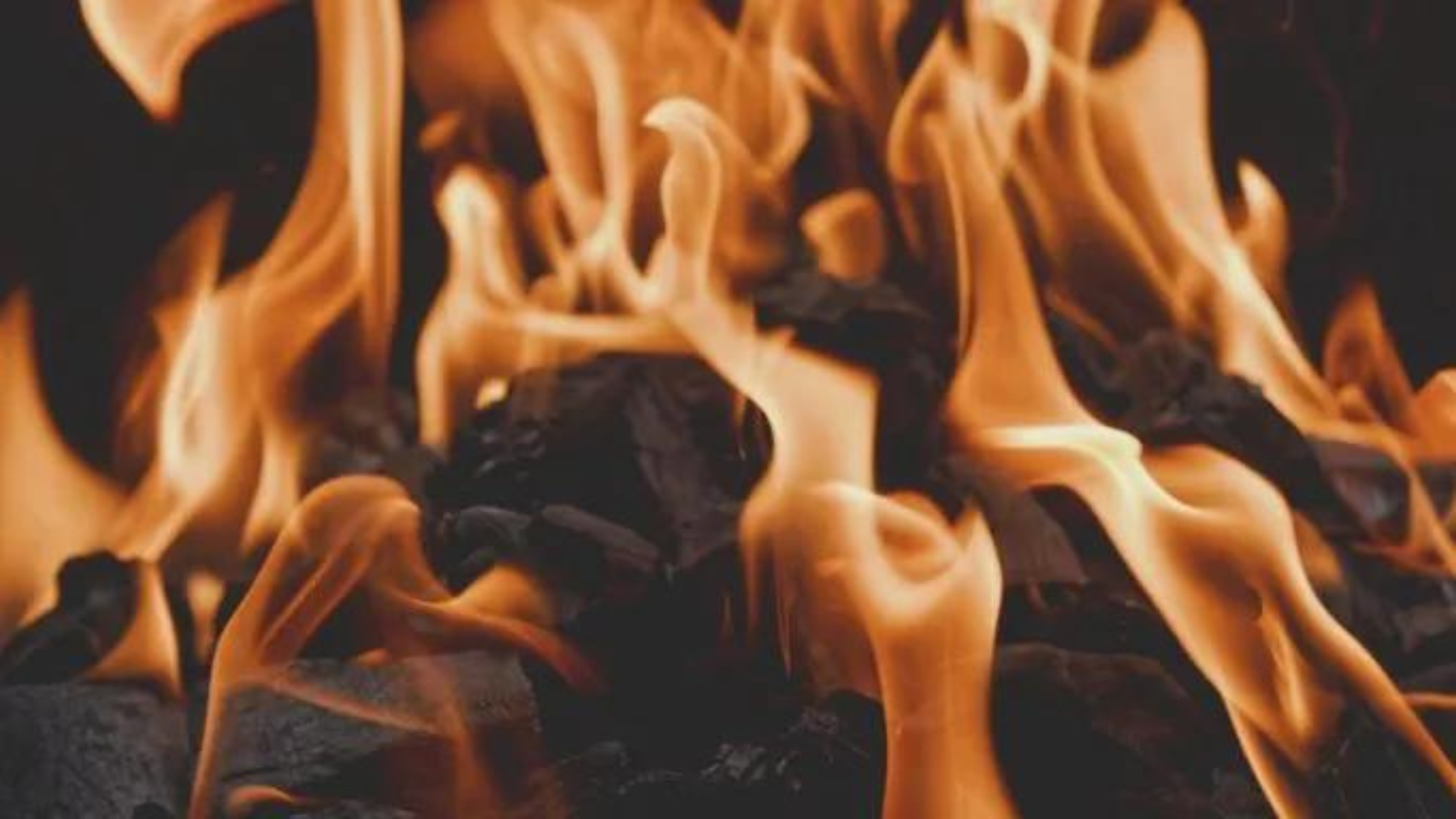Posted by Fire Pit Art on Feb 6th 2023
The Fascinating History of Fire Pits
The Fascinating History of Fire Pits
It is no secret that fire was an essential tool for survival for thousands of years. While there is a considerable amount of debate concerning when the first opportunistic use of fire occurred, there is no debate that humanity created the fire pit out of necessity. Fire provided food, warmth, safety, and community. As society continued to advance, we could no longer light a fire in any open space. Housing was closer together, and the risk of runaway flames grew higher. So as we have done since the beginning of time, we adapted, and the fire pit was born.

History of Fire
Fire has been in existence for millions of years. It is such an early human discovery, crucial to our survival, that every culture has its own origin story of where the precious flame originated. Fire creation myths were a way for societies to explain better and attempt to understand something that was unexplainable. Every culture has a mythology of fire, and often the stories describe the fire as a powerful and fascinating god or goddess. Many stories tell of the divine being forbidding humans to use fire, resulting in humanity stealing it.
Greek Fire Mythology
In Greek mythology, only the gods on Mount Olympus could use fire. Humans suffered down below without. The gods watched how poorly the humans fared without fire. Prometheus, a Titan, felt sorry for the humans and their struggles. He smuggled the fire in a fennel stock from Olympus down to earth as a gift to the humans. However, he did it without Zeus’ permission. Zeus did not take kindly to someone giving the lowly humans fire. In a rage, Zeus punished Prometheus. He had him chained to a rock where an eagle came daily, tore out his liver, and ate it.
Both the Romans and the Greeks had a god of fire. To the Greeks, he was Hephaestus, and to the Romans, he was Vulcan – the destructive god associated with volcanoes.
Indian Fire Mythology
In Indian mythology, fire came from Angi – the Hindu god of fire, associated with all forms of it, including lightning, the sun, and fires used in ceremonial rituals. He was two-faced. On the one hand, people viewed Angi as the god of domestic fire. On the other hand, he was the god of destructive fire. In art, artists depicted Agni with two heads – one signifying immortality and the other symbolizing life.
Southern African Fire Mythology
The African mythology for fire is as wide and varied as the continent of Africa itself. We will look at one mythology story from southern Africa. In the beginning, people and animals lived underground and could communicate with each other. One day, a god, Kaang, created a tree with branches that stretched over the entire world. He then dug a hole that reached underground to where the people and animals lived, allowing them to come up to the surface to admire his creation. He allowed them to stay on the surface and instructed them all to live peacefully together but forbade humans from building fires. He feared that they would cause much destruction and frighten the animals. Of course, the humans disobeyed him, and their fires terrified the animals. Since then, animals fundamentally distrust humans, and both groups can no longer communicate.
North America Fire Mythology
In North America, there is no single common fire mythology. Instead, the numerous tribes each developed their own mythologies explaining the creation of fire and how humanity came to obtain it. Many of the stories hold common themes of sky, fire, water, and earth and that humanity and animals were all connected to these elements. Light (fire) is usually hidden by some malevolent being (usually a god or deity), and it is up to a cultural hero to make the dangerous journey to steal the fire and bring it back to the world. Many myths include tricksters and clever characters who steal light and fire, such as coyotes, wolves, woodpeckers, and ravens.
Maori Fire Mythology
In the Maori tradition, Maui, a demigod shared by many Polynesian cultures, gave humanity fire. There are several versions of this story. One cultural variation is that Maui extinguished all the fire in the world in a fit of passionate anger. He only left his grandmother, Mahuika, the mother of fire, in possession of it. He then tricked her into giving him the fire, existing only in the form of her fingers. Maui then accidentally extinguished them in the water until she only had one finger left. Mahuika threw her last finger down to the world and caught it on fire. Mahuika was eventually killed by the rain and floods, but only after hiding her finger in the hollow of a Kai-Komaki tree. The Maori must rub the wood of this tree together to create fire. Each time, Mahuika’s finger ignites again. In this way, Maui stole fire for the humans and left them a lasting gift.
From the earliest memory of human history, humanity has attempted to understand the power and mystery surrounding the flames. Ironically, as humanity created the fascinating mythology surrounding how we obtained fire, we also created higher beings who refused to give humanity fire. Yet we knew of its essential importance to the survival and betterment of the human race.

History of Fire Pits
The first fire pit dates all the way back to the middle Paleolithic period, occurring around 200,000-400,000 years ago. Archeologists found evidence from sites in Klasies River in South Africa and Israel of a fire pit made from stones. Before the use of the fire pit, groups would deem a fire-watcher to keep an eye on the flames and prevent the fire from spreading where it was not supposed to go. Creating a fire pit was a natural result of discovering fire. As humanity advanced, we developed primitive fire pits using shallow holes in the ground. Scientists speculate that one of the key reasons people placed the flame in the hole was to reduce the flame’s visibility for predators or rival tribes in the surrounding area. Nomadic cultures would perform a special turf-cutting ceremony and remove the turf above the fire pit. After using the fire pit, they would then replace the turn to hide any evidence of the fire or their presence. Still, other cultures dug a simple hole in the ground and filled it with hot stones and coals to create warmth and provide a space for cooking.
Development of Fire Pits
Originally, humans made fire pits by clearing the ground and then surrounding the space with a barrier of rocks. As humanity advanced, fire pits advanced along with us. Eventually, we transitioned to building fire pits made from clay. Next, as humanity learned to work with metals, we created fire pits made from copper. Eventually, iron became the popular medium for fire pits, and elaborate designs came into existence. With the introduction of metalworking, humanity transitioned to using fire pits for above-grounding heating and cooking. They also became impressive works of art.
Eventually, fire pits moved inside. People used centralized fire pits and had holes in their roofs to vent the smoke. Soon this evolved into hearths, the stone floor of a fireplace. Hearths remained in the center of the home, and smoke still exited through a hole in the roof throughout the middle ages. Eventually, the chimney came into existence. The chimney enabled the heating of two-story homes, allowing a fireplace on each level. In addition, chimneys enabled fireplaces to go against the wall instead of in the center of the room. In 1742 Benjamin Franklin invented the stove, constructed of cast iron to replace the fire pit and keep rooms warmer more efficiently and for longer.
Finally, the industrial revolution came, which brought fireplace standardization. During this time, functionality stopped being the sole purpose of fireplaces, and an interest in the ambiance they provided grew. The fire pit changed the course of humankind, enabling us to control this precious tool and continue to advance society.
Archaeological Significance of Fire Pits
Fire pits provide a significant amount of information about ancient cultures and history. Sciences use carbon dating from the charcoal found in old fire pits to estimate when areas were first populated. In addition, the fire pits can reveal when certain civilizations started to die out. The material burned in the fire pits also indicates what society ate during that period, including the bones and seeds found in the ash.
Archaeologists refer to fire pits as “features” because you can see and record them as a part of the archaeological site. Still, you can’t remove them without destroying the rich insight it provides into the lives of past civilizations.
Final Thoughts
The discovery of the flames and how to control them was one of the most pivotal moments in human history and forever shaped how our modern societies came into existence. Thousands of years later, humanity is still drawn to the flame and loves to enjoy its warmth and ambiance. Check out one of Fire Pit Art’s breathtaking fire pits today. Our fire pits are expertly crafted. They hold a simple elegance, paying homage to the flames!
Follow Fire Pit Art on Facebook, Instagram, YouTube, and Pinterest!

